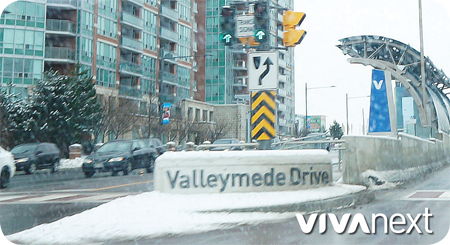If you’ve ever tried to fit a load of plants from a garden centre trolley into the back of your car, you’ll know that 292 trees and 4,910 perennials and grasses is a lot of plant material.
That’s the number of individual plants that we’ll be installing in the planters in medians and boulevards along our Highway 7 rapidways between East Beaver Creek and South Town Centre Boulevard, from now until the end of June.
As we’ve described in earlier postings, the plant selections were made carefully, and reflect expertise from our Landscape Architects and York Region’s own Forestry Department. Plants in the planters need to be hardy and strong to be able to withstand the tough conditions imposed by their surroundings. Not only do they need to be generally low maintenance, but being so near traffic means they have to survive wind, drought and salt-spray in the winter.
Another key requirement is that trees under hydro lines need to be naturally compact so that they don’t conflict with the lines overhead and can grow to their full potential without needing to be pruned.
So the final list was carefully developed with all these requirements in mind, and includes a wide range of trees, shrubs, perennials and grasses. Trees include Kentucky Coffee tree, Ivory Silk Tree Lilac, and Ohio Buckeye, all of which are well regarded as decorative, long-lived trees.
Tree plantings will also include Skyline Honey Locust and Accolade Elm, both of which are prized as street trees for their vigorous growth and adaptability to tough growing conditions (and in the case of the latter, resistance to Elm disease). Rounding out the tree selections, the Autumn Blaze Maple and Bradford Pear will provide colour interest and welcome shade.
Along the medians and in the boulevard planters, there is a wide range of grasses, shrubs and perennials which will provide form and colour throughout the year. Most are familiar to home gardeners, such as varieties of red twig dogwood, shrub roses and Euonymus. Mugho Pines and various forms of juniper will offer structure to our planters in the winter. And grasses, daylilies and coneflowers will provide flower interest in the summer.
With all these plants the boulevards and vivastation platforms will be more appealing to pedestrians and transit riders, who will appreciate the shade and colour up close. But even from a distance, the addition of new landscaping will make Highway 7 much more attractive and pleasant for everyone passing through, and will add to the feeling that this increasingly urbanized corridor welcomes all users.










